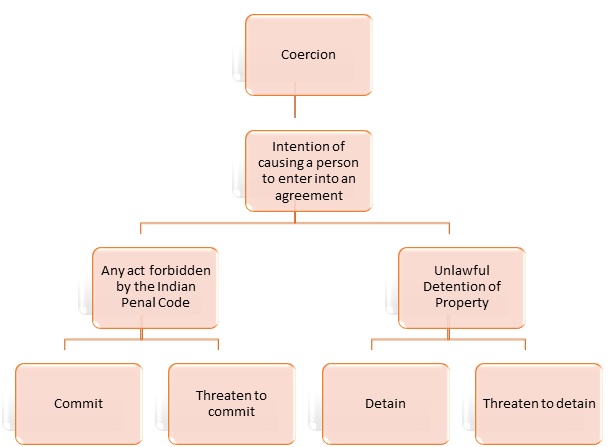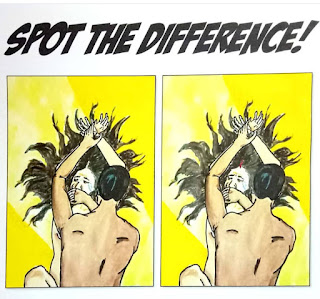Intellectual Property Rights and Public Interest
Intellectual property rights are the rights given to persons over the creations of their minds. These usually give the creator an exclusive right over the use of his/her creation for a certain period of time.[1]
THE NEED FOR INTELLECTUAL PROPERTY RIGHTS
The first need for the development of
intellectual property rights emerged in Greece, in the 6th century. Every
person, though not always, desires to have some appreciation and reap benefits
from his work done for the betterment and development of the society. He expects
that his work should be respected and protected from any infringement and misuse,
so that the creation can be used for the maximum welfare of the society. This
thought process was expressed in the form of Intellectual property right laws,
which protect such inventions and creations from exploitation by any other
unrelated party without the inventor’s permission.
Intellectual property laws grant monopoly and certain
exclusive rights to the inventor over his invention as a reward for his
intellect. This recognition acts as an incentive to the inventor to carry out
further inventions which are also beneficial for the society.
INTELLECTUAL PROPERTY RIGHTS FOR PUBLIC WELFARE/ PUBLIC
HEALTH
In this article, we will be focusing on IPR and
its impact on the pharmaceutical industry. The main problems faced in the
pharmaceutical industry are related to patents. Patent
is a kind of intellectual property which provides a right to an inventor over
his own invention. Patent right is generally given for technological
innovations, which may include the product itself, or the process that lays
down a new method of doing something.
This
patent right is a protection given to the inventor of an invention, which prevents
others from using, manufacturing, selling, offering for sale or importing the
invention, without the permission of the inventor. Patent protection is granted
for a term of 20 years from the date of filing of an application.
Intellectual property rights allow the patentee
to recover his investment and earn profits, and at the same time also help the
public reap harvests from these innovations. But does the grant of monopoly
through such rights have any adverse effects on the public is a question that
needs to be answered. These adverse effects of monopoly have generally been found
in patent law, especially with respect to pharmaceutical developments and
public health. Right to health is provided under Article 25 of the Universal
Declaration of Human Rights (UDHR).[2]
This right encompasses the right to adequate living, food, clothing, shelter,
medical care and so on. Amongst these, it also
envisages access to drugs and techniques for therapeutic diagnosis, and also
access to sophisticated apparatus for the diagnosis, prevention and cure of
disease, as they become essential factors guaranteeing the health of human
beings. These factors have been in conflict with intellectual property laws
since a long time.
The exclusive rights granted to inventors to
enjoy fruits of their intellect have sometimes led them to exploit consumers
primarily through high prices. The tension between private rights and public
good has always been the top concern of intellectual property laws. It has been
observed by various experts that in case of public health and nutrition, patent
laws on pharmaceutical inventions should have certain exceptions in granting
exclusive monopoly to the owner.
It is always argued that the patent protection
under the Trade-related aspects of Intellectual
Property Rights Agreement (TRIPS), which provides minimum standard of
protection to all the Intellectual Properties, has been very rigid. It fails to
provide for any explicit provisions, stipulating exceptions in the case of
medicines and vaccines. It is also said that the current patent system does not
adequately pay attention to the public health crises. The patent rights given
act as a hindrance in the access to medicines by the general public and have
led to the increase in prices of general medicines. These restrictions on
patent laws have become thorny for the developing and under developed countries.
The emergence of large pharmaceutical firms
producing drugs for numerous life threatening diseases has been relying on
patents for the protection of their products. This in return has given them
excessive monopolies in deciding exorbitant prices for their product during the
patent protection period of 20 years. Such high prices have made the medicines
unaffordable to poor people in the developing countries. For example, in many South African countries where there is an
overload of patients suffering from HIV and AIDS, the lack of access to medical
facilities and medicines due to the strict patent systems has created a lot of
problems. Another concern is that as patent laws are territorial in nature, the
different laws governing the patent right in different countries have created
conflicting situations.[3]
THE DOHA DECLARATION[4]
The standards provided by the TRIPS agreement
caused a lot of chaos amongst the member countries regarding public health.
Considering this, Doha Declaration on
TRIPS Agreement and Public Health was adopted in the year 2001. Evaluating
the problems of the under developed and developing countries resulting from various
deadly diseases and their inability to produce or import medicines, it tried to
provide a solution under the TRIPS Agreement. The Doha Declaration primarily
wanted the TRIPS Agreement to be inclusive of various national and
international provisions relating to health problems, as there was an urgent
need of the protection of intellectual property for the development of new
medicines and their availability at affordable prices.
To accomplish the above purpose certain
flexibilities were added in the agreement.
- Each member country has the right to grant compulsory licenses and is free to determine the grounds for granting these licenses.
- Each member has the right to decide what is national emergency, or any other emergency due to public health crises.
- Each member country has the right to decide its own principle of exhaustion that is provided in the TRIPS agreement.
COMPULSORY LICENSING
The provision of compulsory licensing is granted
by governmental authorities. It helps any third party to use the patented
invention without the permission of the owner. The Doha Declaration enabled the
developing countries to make provision of compulsory licensing in their
national legislation, so that medicines could be made available to all. Though
the TRIPS Agreement contained this provision earlier, it had some ambiguities
which restricted the countries in applying it. Now, with the help of
clarifications and flexibilities the countries could develop their health
sector to a great extent.
Not only this, but the Declaration also allowed
the developed countries to permit their manufacturers as exporters under
compulsory licensing. Owing to this, countries like Canada, Netherlands,
Switzerland, Norway and other European countries have made amendments in their
laws. Similarly, India has also made various amendments under the Indian
Patents Act, 1970. These amendments include:
- The Central Government in case of national emergency or public non-commercial use it may grant compulsory licenses.
- Also, the compulsory licenses will also be applicable for manufacturing and exporting pharmaceutical products to countries where there is insufficiency of such products.
Bayer vs. Natco, 2014[5], is the first
judgment in which the Supreme Court of India granted its first compulsory
license. In this case, the compulsory license was granted to Natco for the
generic production of a medicine called Nexvar produced by Bayer which is used
for the treatment of cancer.
A NEED TO BALANCE BETWEEN IPR AND RIGHT TO HEALTH
The impact of IPR on public health has been a
topic of increasing debate. As a Human Right, the nations are obligated to
provide advanced medical and health care facilities to the people, and at the
same time they also need to make IP Laws to promote and incentivize further
research and development. On one hand, strict patent laws are negatively
affecting the medical industry and health, whereas, on the other hand, weak or
absolute lack of IP laws in the medical field may hinder the economic
development of the nation. Thus, it is very necessary to strike the right
balance between IPR and public health. The IP laws need to be developed in such
a way that comply with the Human Rights provisions and, especially work towards
providing affordable health care to all.
By
Sayali
Mandlik
3rd
B.A. LL.B.,
ILS Law College, Pune
REFERENCES
- https://www.wto.org/english/tratop_e/trips_e/intel1_e.htm#:~:text=Intellectual%20property%20rights%20are%20the,a%20certain%20period%20of%20time
- https://www.un.org/en/universal-declaration-human-rights/
- https://theconversation.com/explainer-the-problem-drug-patents-pose-for-developing-countries-45667
- https://www.mondaq.com/india/trademark/455952/how-ip-law-can-work-best-for-public-interest
[1]What
are intellectual property rights?, World Trade Organization, Available at https://www.wto.org/english/tratop_e/trips_e/intel1_e.htm#:~:text=Intellectual%20property%20rights%20are%20the,a%20certain%20period%20of%20time.
[2] Art. 25, Universal
Declaration of Human Rights.
[3]Misha Ketchell, Explainer: the problem drug patents pose for
developing countries, The Conversation, available at https://theconversation.com/explainer-the-problem-drug-patents-pose-for-developing-countries-45667
[4] V. K. Ahuja,
Intellectual Property Rights In India, (2nd Ed.,2015)
[5] Rishu Srivastava and
Shilpi Saurav, India: How IP Law Can Work
Best For Public Interest, available at https://www.mondaq.com/india/trademark/455952/how-ip-law-can-work-best-for-public-interest




Comments
Post a Comment